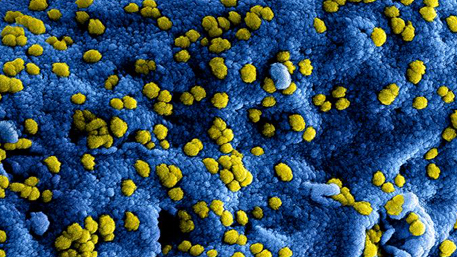
Face masks: what the data say
L Peeples, Nature, October 6, 2020
L Peeples, Nature, October 6, 2020
The science supports using masks, with recent studies suggesting that they could save lives in different ways: research shows that they cut down the chances of both transmitting and catching the coronavirus, and some studies hint that masks might reduce the severity of infection if people do contract the disease.
System Dynamics Model of Possible Covid-19 Trajectories Under Various Non-Pharmaceutical Intervention Options in Low Resource Setting.
LWK Bitok et al, MEDRXIV, October 8, 2020
LWK Bitok et al, MEDRXIV, October 8, 2020
Age- and Sex-Specific Modelling of the COVID-19 Epidemic
A Doerre et al, MEDRXIV, October 8, 2020
A Doerre et al, MEDRXIV, October 8, 2020
Plasma ACE2 activity is persistently elevated following SARS-CoV-2 infection: implications for COVID-19 pathogenesis and consequences
SK Patel et al, MEDRXIV, October 8, 2020
SK Patel et al, MEDRXIV, October 8, 2020
AI for radiographic COVID-19 detection selects shortcuts over signal
AJ Degrave et al, MEDRXIV, October 8, 2020
AJ Degrave et al, MEDRXIV, October 8, 2020
Detection of SARS-CoV-2 with SHERLOCK One-Pot Testing.
Joung Julia et al. The New England journal of medicine 2020 Oct (15) 1492-1494
Joung Julia et al. The New England journal of medicine 2020 Oct (15) 1492-1494
We describe a simple test for detection of SARS-CoV-2. The sensitivity of this test is similar to that of reverse-transcription–quantitative polymerase-chain-reaction (RT-qPCR) assays. STOP (SHERLOCK testing in one pot) is a streamlined assay that combines simplified extraction of viral RNA with isothermal amplification and CRISPR-mediated detection. This test can be performed at a single temperature in less than an hour and with minimal equipment.
Characteristics of SARS-CoV-2 and COVID-19
B Hu et al, Nat Rev Microbiology, October 6, 2020
B Hu et al, Nat Rev Microbiology, October 6, 2020
We summarize current knowledge of clinical, epidemiological and pathological features of COVID-19, as well as recent progress in animal models and antiviral treatment approaches for SARS-CoV-2 infection. We also discuss the potential wildlife hosts and zoonotic origin of this emerging virus in detail.






















.png)











No hay comentarios:
Publicar un comentario